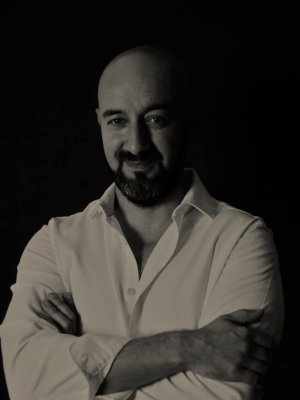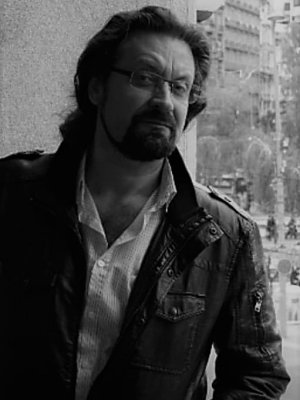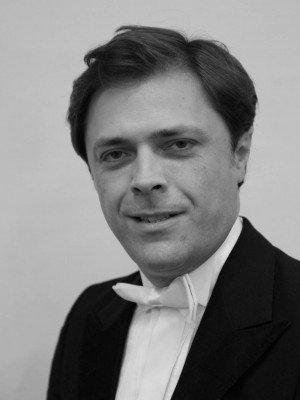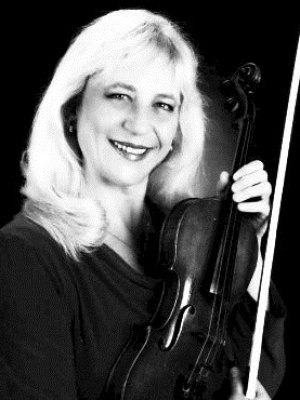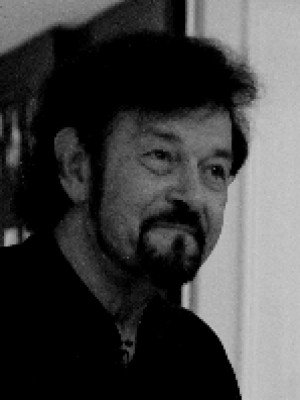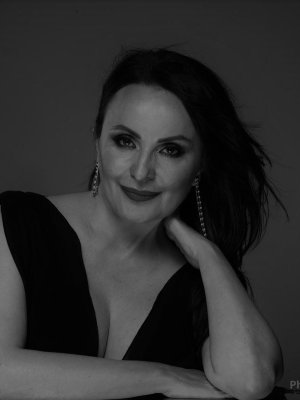Atilla
opera by Guiseppe Verdi

OPERA ATTILA BY VERDI
Attila the Hun ruled in period between 434 and 453. The centre of his state, which covered a territory from Denmark to Pannonia and from the river Rhine to Caspian Sea, was in Hungarian valley, near the town of Tokay. Many German and Slavic tribes were forced to accept his rule and, at times, even Byzantium was forced to do so. In 451, he invaded the Gaul, but Aetius defeated him near Catalunum. The following year he plunders through Italy and destroys Aquileia. The city of Venice was founded as a result of these attacks when the residents fled to small islands in the Venetian Lagoon. Attila’s next goal was Rome, but he was met by the Pope Leo I and, according to legend, he was “converted” and decided against plundering and destruction of the city of Rome and went back to Hungary. Raffaello has recorded the account in his famous painting. A romantic German playwright Zacharias Werner (1786–1823) wrote a play Attila, König der Hunnen (Attila, King of the Huns) in 1803, which has all the characteristics of exaggerated Romanticism. The plot is about a famous historic invasion of Rome in the fifth century, convincing Attila to obey God’s demand conveyed by the Pope Leo I, and Attila’s part in his opponents’ intrigues and his murder by the hand of his new wife. From our point of view, the plot is somewhat illogical, confusing and lacking skill, so nobody even considers producing this piece. However, does not the similar stand for dramas written by Victor Hugo, who is considered to be the greatest French poet by some (Hernani, Ruy Blas, Lucrece Borgia)? Werner’s Attila has many choruses which demand music, i.e. operatic singing, similar to classic Greek tragedies. At the time, people thought highly of the drama and even Beethoven was thinking about writing an opera on Attila! After his great success with Ernani and delighted with the plot of Werner’s Attila, Verdi started working with Piave, a librettist, on the new opera in spring 1844. He asks from the librettists “a play in three acts with a prologue; the curtain should go up at the moment when Huns and the people of devastated Aquileia sing strong and striking choruses: the people pray and the Huns threaten”. “The first act should start in Rome and finish with a scene in which Hildegonde warns that the drink in a cup is poisoned and asks satisfaction to punish the culprit with her own hand”, continues Verdi and expresses concern that the censors will not allow stage account of the meeting between the Pope and Attila the King of the Huns. Verdi asks the librettist to study well the document written by Mme de Staël De l’Allemagne, which provided Europe with a romantic vision about the nature of simple, honest, just and somewhat bloodthirsty northern nations. Numerous characters in the drama were reduced to just six characters, out of which four are leading and two are minor. Burgundian princess Hildegonde becomes Odabella, daughter of the Lord of Aquileia, Walter becomes Foresto, a Knight of Aquileia, and a Bishop and Pope Leon appears only in the scene when he meets Attila. In November 1844, Verdi and Piave were successful in Rome with opera The Two Foscari (after Byron’s piece) and in February 1845, Verdi and librettist Temistocle Solera were successful in La Scala in Milan with Giovanna d’Arco (after Schiller’s piece). In August 1845, the success does not happen with opera Alzira written for Verdi by a renowned librettist Cammarano after Voltaire’s tragedy and Verdi decides to change the librettist for Attila, because he desperately needed success with his new opera. Verdi then turned to Solera and was delighted with parts of the libretto and quickly composed music for it. The opera premiered in La Fenice theatre in Venice and the best of singers were selected for it. Ignazio Marini, a bass, had the title role, he also sang the title role in Verdi’s first opera Oberto; tenor role was given to a renowned singer Carlo Guasco; the only female part was given to even more famous Sophie Loewe; and the baritone role of Ezio was given to Natale Costantini. However, Attila had some set backs: when Solera’s wife Theresa, a renowned singer, was scorned in La Scala, Solera gets offended, leaves Milan and goes to Madrid to work as a close associate and adviser to the Spanish Queen Isabel, and leaves the final act of the libretto unfinished. Therefore, Verdi returned to Piave for the last act. Solera has been offended when he read the new version “of a piece he used to take pride in, which was turned into parody”, but in the world of opera, these things are not taken too seriously. Consequently, the libretto for Attila is neither better nor worse than any other libretto of the time and many inconsistencies, let us not call them mistakes, are taken as a norm. Libretto was never meant to be read as a drama, instead it is a means to compose beautiful and efficient arias, romances and cabalettas, grand finales with choruses and every person in audience knew when a singer should perform a certain aria or a duet. At the time of fight to unify Italy and to liberate it from Austrians, the audiences in all operas throughout Italy spontaneously reacted to certain verses from the libretto. Ezio’s words to Attila Avrai tu l’universo, Resti l’Italia a me / “You may have the universe, but let Italy remain mine”, were received as a call to expel Austrians and have brought unprecedented success to the opera. At the premiere on 17 March 1846, the opera received resounding success and after a short time, Attila has been produced throughout Italy and in the year to follow in Copenhagen, Madrid and Lisbon. Then London, Havana, New York, Bucharest followed. In 1851, the opera was produced in Vienna, in 1852 in Budapest, 1853 in Buenos Aires, Rio de Janeiro and the rest of opera world followed; in 1864, an opera critic said, “Attila is probably the most successful Verdi’s opera!” Nonetheless, operas from Verdi’s mature period followed and productions of the opera by a young master got more infrequent and finally disappeared from operatic stages. Only in the years following the Second World War there was a cautious and almost timid “renaissance” of Attila, while in recent times it became triumphant. In 1985, it was a hit of the season in Arena in Verona; it has been produced in Vienna, Sofia, Zurich, Venice, Naples and other cities. We can optimistically observe that Attila may join Nabucco, which has “come back into fashion” in the course of past decades. Strong rhythms, stronger, livelier, more striking choruses than those in Nabucco, striking arias, effective duets and grand scenes with much movement, as well as numerous melodies agreeable to one’s ear, mastery in skill – are characteristics that can attract audiences interested in historical spectacles and beautiful voices. Attila overture, which is not a combination of popular operatic melodies, instead it is a dark introduction into the piece, is based on a motive sang by druids predicting doom. The prologue consists of warrior choruses followed by Odabella’s cavatina Allor che i forti corrono / “While your warriors rush to their swords like lions”, a challenging Amazon aria, demanding and difficult, but successful and effective. Cabaletta with chorus represents a new possibility for a soprano. Duet of Attila and Ezio is a real contest of a bass and a baritone and a true challenge for singers. Introductory music in the second scene of the prologue depicts a tremendous storm in the lagoon. Foresto’s cavatina and cabaletta (Cara patria già madre e reina / “Dear homeland, at once mother and queen of powerful, generous sons”) do not fall behind similar pieces of the time. Odabella’s romance in the first act is interesting for its finesses in instrumentation. Solo English horn, flute, violoncello and the harp accompany the voice, which is a sufficient proof of young Verdi’s attempts to leave the mainstream and search for his own style. Duet of Odabella and Foresto goes according to the pattern, however when the young couple reconcile, they do not sing in usual tierce and sixths, but in unison, which suggests strength of their intention. The scene in Attila’s camp represents a novelty in Verdi’s style. It is not a common place, which more or less suits any opera; instead, it is a discrete introduction into the plot of the scene. Attila’s dream and subsequent striking singing charm each person in audience. Warriors’ chorus is interrupted by a gentle sound of children’s chorus, thus giving chance to Verdi to make the most striking musical contrast. Leone’s (Pope Leo I) address to Attila, sang in a stentorian voice, gives indication of future the Grand Inquisitor scene from Don Carlos. Powerful and effective ensemble in the end of the first act offers sufficient proof of young Verdi’s mastery. Ezio’s aria at the beginning of the second act is a true pearl for baritones and is frequently sung. Resounding march in a finale of this act has been unrivalled the time. Dance of priestesses and their wavy song give necessary contrast and rest. Large ensemble with dynamical extremes demands a superb chorus. Finale is strong, effective and demanding for all soloists. Foresto’s aria Che non avrebbe il misero / “What would that wretched man not have offered” in the third act is, according to many critics, the most beautiful part of the whole opera and, by all means, belongs to the best arias of young Verdi. Tierce of soprano, tenor and baritone is a lyrical oasis and the author’s mastery when mixing wedding choruses with recitatives of soloists is doubtless. Finale at the very end is too concentrated; Attila’s murder is not musically expressive, so many directors, in cooperation with conductors, have introduced parts from some other Verdi’s operas in order to keep the final scene more persuasive and longer. However, we feel that this is not necessary after all. After having produced Ernani and Macbeth, and following our intention to produce as many pieces of such a great master as Giuseppe Verdi as possible, Attila seems to be the next logical choice.
Konstantin Vinaver (1987)
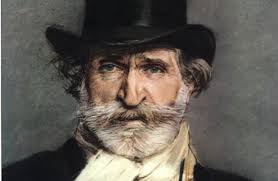 GIUSEPPE VERDI
GIUSEPPE VERDI
Giuseppe Verdi (1813–1901), a famous Italian composer, showed his talent quite early. While earning a living as an organist, he began to write operas in Milan. In 1839, his Oberto was successfully performed at La Scala, and it initiated Verdi’s long association with the publisher Giulio Ricordi. His next opera, Un giorno di regno (1840), was a failure. Not long after, Verdi’s two young daughters and wife died. He overcame his despair by composing Nabucco (1842); it was a sensational success. It was followed by the equally successful I Lombardi (1843) and others, including Attila (1846). For the rest of the decade he wrote a hit opera every year. Rejecting the prevailing structure of Italian opera — a patchwork of open-ended scenes and inserted arias, duets, and trios — he began conceiving of an opera as a series of scenes integrated into acts. Specializing in stories in which characters’ private and public lives come into conflict, he produced a series of masterpieces, including Rigoletto (1851), Il trovatore (1853), La traviata (1853), Uno ballo in maschera (1859), Don Carlos (1867), and Aïda (1871). A fervent nationalist, he was regarded a great national figure of still non-unified Italy. After composing Requiem (1874), he retired, but when Ricordi brought him together with the Italian poet and composer Arrigo Boito, initially to revise Simon Boccanegra, their mutual esteem led to the two great operas of Verdi’s old age, Othello (1886) and Falstaff (1890).
 DEJAN MILADINOVIĆ
DEJAN MILADINOVIĆ
Dejan Miladinović was born in Belgrade, into a family of opera artists. In 1971, he graduated from the Department of Theatre Direction (Jelisaveta’s Love Plight, Theatre Atelier 212) and in 1976, he received the title Master of Theatrical Arts from the Academy for Theatre in Belgrade with the thesis Development of Opera Direction in Belgrade and Novi Sad in period 1919-1975. Miladinović has served as first Director at Opera and Drama companies (1973-78) and Artistic Director of the Opera Company (1987-88) in the Serbian National Theatre in Novi Sad. He has also served as Director and Artistic Consultant for “Grand Opera Projects” with Convention Centre “Sava” in Belgrade. In 1978, he has assumed the position of Director in Opera of the National Theatre in Belgrade and in 1997, he has become Artistic Director in the same company. Since April 2005, he again has served as Artistic Director at Serbian National Theatre in Novi Sad and since October 2006, Artistic Director at Opera & Theatre Madlenianum in Zemun. Currently he is a freelance artist. He has worked as an Associate Professor and Artistic Director of Opera Theatre at Meadows School of Arts, Southern Methodist University, Dallas, Texas (1991–95), and Associate Professor of Opera Theatre at Music Conservatory, Belgrade (1994–2001), and Associate Professor at Thornton School of Music, University of Southern California, Los Angeles, California (2000–02). Miladinović has staged more than 160 productions with professional companies in former Yugoslavia and abroad (USA and Canada especially). He has cooperated with numerous renowned composers, conductors and international opera stars. He has directed most first productions of music and stage pieces of national composers. Besides direction, he has written librettos (The Power of Virtue, by Kuljerić, Prometheus by Bruci, Mandragola by Jevtić - verses by V. Miladinović, Merry Priests of Banat by Despić- verses by V. Miladinović), composed music and designed sets for drama productions. Miladinović is the only triple laureate for direction by the international jury at Yugoslav Chamber Opera and Ballet Festival – Osijek Annual, as well as “Jovan Đorđević” Golden Medal of Serbian National Theatre for outstanding accomplishments in operatic art (2006). Miladinović “is an artist of imaginative, bold and unconventional conception. He has directed numerous operas with resounding success. Both audiences and critics unanimously and with delight favour his productions for their obvious theatrical quality and modern direction” (Yugoslav Music Encyclopaedia, Zagreb). Radoslav Lazić, PhD, wrote, “…Josip Kulundžić, PhD Branko Gavela, PhD Erih Hecel, as well as Mladen Sabljić, Jovan Putnik and Dejan Miladinović have given foundation to modern Serbian opera theatre. They are the creators of Serbian opera theatre of the twentieth century and its aesthetics” (The Art of Direction, Novi Sad).
 DEJAN SAVIĆ
DEJAN SAVIĆ
Dejan Savić (1957), the outstanding Serbian conductor, graduated conducting with distinction at the Academy of Music in Belgrade and received his Masters Degree at the Academy of Arts in Novi Sad. Since 1993, Mr. Savić has been the Principal Conductor and, in two mandates, the Manager of Opera and Ballet Companies in the National Theatre in Belgrade. In the period between 2005 and 2007, Mr. Savić held the office of the General Manager in the National Theatre. Besides his continuous engagement in the National Theatre, he has been an Artistic Director of Niš Symphony Orchestra, as well as a music manager of “Pro Classica” Chamber Orchestra, Chamber Ensemble “Pro Musica” and „The Baruh Brothers” Choir. Mr. Savić has conducted numerous renowned international orchestras; several renowned Greek symphony orchestras, including those in Athens and Thessaloniki and he has been a guest conductor of the National Symphony Orchestra of Greek Radio (ERT). In the course of his career, he has conducted the following orchestras: Bloomingdale Symphony Orchestra (New York); Bulgarian Radio Symphony Orchestra and National Philharmonic from Ruse (Bulgaria); Symphony and Chamber Orchestra of Rumanian National Radio in Bucharest; Rhine Philharmonic and Opera Choir (Germany); National Opera and Ballet Company from Krasnoyarsk (Siberia); Portuguese Orchestra from Algarve; and many companies in Italy – Polyphonic Choir “David Brunori” and Philharmonic Orchestra of Marche Region; Italian International Orchestra and Choir of Ventidio Basso Theatre in Ascoli Piceno; Gioachino Rossini Symphony Orchestra from Pesaro; City Choir from Bitonto; Giuseppe Verdi Philharmonic Orchestra in Salerno; Chamber Orchestra of Puglia, etc. One should not forget the Choir and Symphony Orchestra of Serbian National Broadcasting Company (RTS) and Belgrade Philharmonic Orchestra. He performed in operas in Dublin (Ireland), Athens and Thessaloniki (Greece), Strasbourg (France), Sofia (Bulgaria), Oslo (Norway), Vienna (Austria), Bucharest (Rumania), Burgas (Bulgaria). With the National Theatre and with companies he conducts, as well as individually, he has also performed in Israel, Holland, Switzerland, Spain, Cyprus, etc. His national and international successes have been recorded in numerous audio and video recordings. He has received numerous awards for his artistic achievements.
Premiere performance
Premiere revival 25 June 2011 / Main Stage
Opera in three acts with prologue (seven scenes)
Libretto by Temistocle Solera
Director Dejan Miladinović
Conductor Dejan Savić
Set Designer Aleksandar Zlatović
Costume Designer Milanka Berberović
Choreographer Vladimir Logunov
Assistant Conductor Đorđe Pavlović
Tapestry by Aleksandar Zlatović
Visual Conception of Costumes Predrag Đapić
Premiere cast:
Attila, King of the Huns Ivan Tomašev / Dragoljub Bajić / Živan Saramandić
Ezio, a Roman General Marko Kalajanović, guest artist / Miodrag D. Jovanović
Odabella, daughter of the Lord of Aquileia Sanja Kerkez / Ana Rupčić
Foresto, a Knight of Aquileia Janko Sinadinović / Dušan Plazinić
Uldino, a Breton slave of Attila’s Danilo Stošić* / Dejan Ljutovac*
Leone Miloš Đuričić* / Aleksandar Pantelić*/ Mihailo Šljivić*
Captains, kings and soldiers of the Huns, people of different nations, priestesses, shamans, Aquileians, warrior Aquileian girls in uniform, Roman girls, monks, slaves and populace of Rome Prologue takes place in Aquileia and Adriatic lagoons, acts take place near Rome – middle of the fifth century.
* Member of National Theatre’s “Borislav Popović” Opera Studio
ORCHESTRA, CHOIR AND BALLET COMPANIES OF THE NATIONAL THEATRE
Chorus Master Đorđe Stanković
Concertmaster Vesna Jansens / Edit Makedonska
Stage Music Đorđe Stanković
Stage Manager Branislava Pljaskić, Ana Milićević
Assistant Choreographer and Instructor Paša Musić
Music Associates: Srđan Jaraković, Nevena Živković, Nada Matijević
Chorus Instructor Tatjana Ščerbak Pređa
Caption Translation Konstantin Carina
Organizers: Maša Milanović Minić, Snježana Vujasinović
Prompters: Silvija Pec, Biljana Manojlović
With participation of National Theatre’s extras
Sketch of Attila’s costume by Milanka Berberović has been used for the playbill, banner and cover page of the Program.
Lighting Design by Petar Alagić revived by Miodrag Milivojević
Make-Up Design by Nijaz Memiš revived by Dragoljub Jeremić
Stage Master Nevenko Radanović
Sound Master Tihomir Savić
Decor and costumes have been manufactured in the workshops of the National Theatre in Belgrade.
Premiere 4 June 1987 (Sava Centre)
Premiere 23 January 1993 (National Theatre)
Premiere revival 25 June 2011
Opera in three acts with prologue (seven scenes) Libretto by Temistocle Solera Director Dejan Miladinović Conductor Dejan Savić Set Designer Aleksandar Zlatović Costume Designer Milanka Berberović Choreographer Vladimir Logunov Assistant Conductor Đorđe Pavlović Tapestry by Aleksandar Zlatović Visual Conception of Costumes Predrag Đapić
Premiere cast: Attila, King of the Huns Ivan Tomašev / Dragoljub Bajić / Živan Saramandić Ezio, a Roman General Marko Kalajanović, guest artist / Miodrag D. Jovanović Odabella, daughter of the Lord of Aquileia Sanja Kerkez / Ana Rupčić Petrović Foresto, a Knight of Aquileia Janko Sinadinović / Dušan Plazinić Uldino, a Breton slave of Attila’s Danilo Stošić* / Dejan Ljutovac* Leone Miloš Đuričić* / Aleksandar Pantelić*/ Mihailo Šljivić* Captains, kings and soldiers of the Huns, people of different nations, priestesses, shamans, Aquileians, warrior Aquileian girls in uniform, Roman girls, monks, slaves and populace of Rome Prologue takes place in Aquileia and Adriatic lagoons, acts take place near Rome – middle of the fifth century. * Member of National Theatre’s “Borislav Popović” Opera Studio ORCHESTRA, CHOIR AND BALLET COMPANIES OF THE NATIONAL THEATRE Chorus Master Đorđe Stanković Concertmaster Vesna Jansens / Edit Makedonska Stage Music Đorđe Stanković Stage Manager Branislava Pljaskić, Ana Milićević Assistant Choreographer and Instructor Paša Musić Music Associates: Srđan Jaraković, Nevena Živković, Nada Matijević Chorus Instructor Tatjana Ščerbak Pređa Caption Translation Konstantin Carina Organizers: Maša Milanović Minić, Snježana Vujasinović Prompters: Silvija Pec, Biljana Manojlović With participation of National Theatre’s extras under the supervision of Zoran Trifunović. Sketch of Attila’s costume by Milanka Berberović has been used for the playbill, banner and cover page of the Program. Lighting Design by Petar Alagić revived by Miodrag Milivojević Make-Up Design by Nijaz Memiš revived by Dragoljub Jeremić Stage Master Nevenko Radanović Sound Master Tihomir Savić Decor and costumes have been manufactured in the workshops of the National Theatre in Belgrade. Premiere 4 June 1987 (Sava Centre) Premiere 23 January 1993 (National Theatre) Premiere revival 25 June 2011




